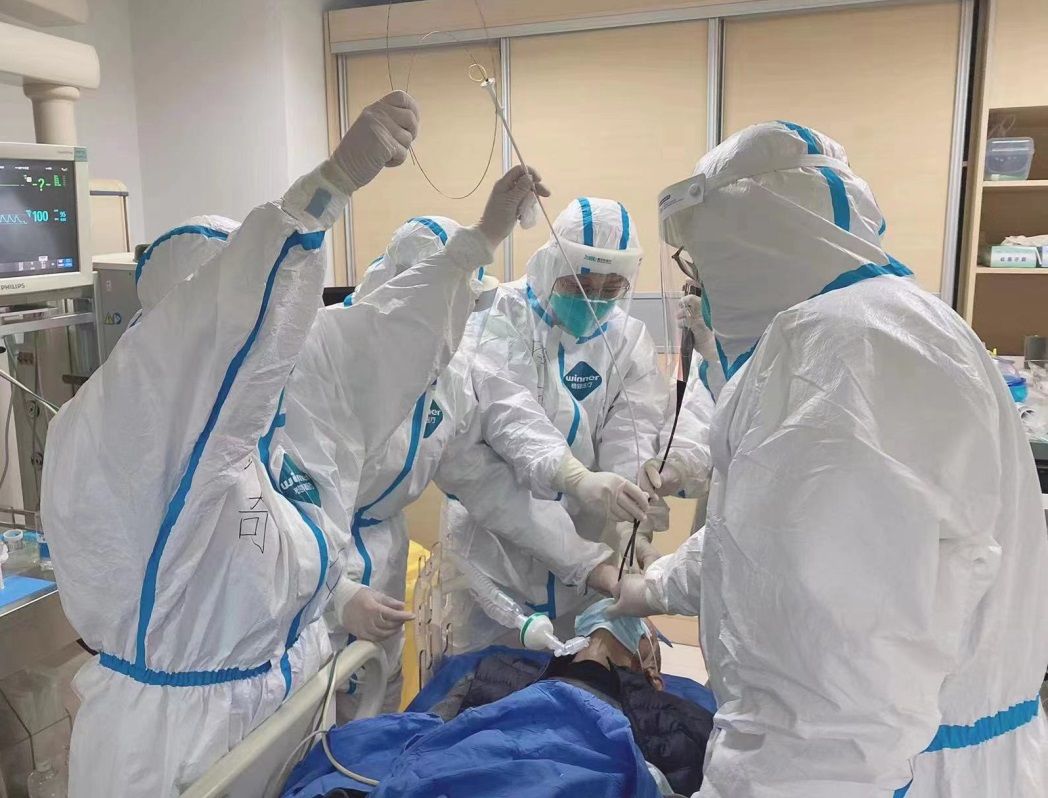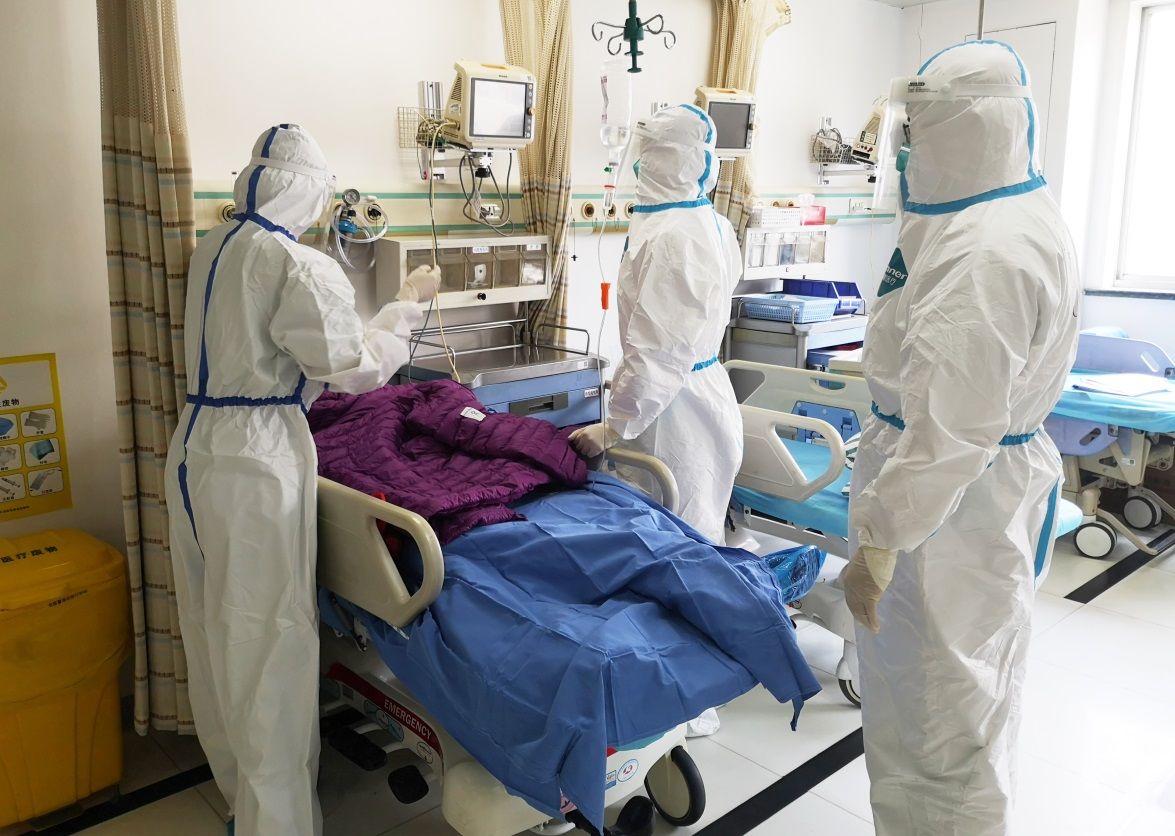
Meng Laobo, 86 years old, lives in Pudong and has been diagnosed with esophageal cancer for 6 months. He has been receiving radiotherapy and chemotherapy without surgery.
During the epidemic, symptoms such as shortness of breath, difficulty breathing, and being unable to lie flat for 10 days suddenly appeared. Lung CT showed that the external pressure of the esophageal tumor caused severe stenosis in the middle and upper trachea. The diameter of the narrowest part of the trachea was only 2-3 mm. There was a danger of death from tracheal suffocation at any time, and he was admitted to the emergency department of Shanghai Changhai Hospital on April 21.
Assessed by the respiratory endoscopy team, Meng Laobo has indications for emergency bronchoscopy for tracheal stent placement, that is, a stent is placed in the narrowest trachea through a bronchoscope to expand the stenosis, thereby To achieve the therapeutic purpose of smooth breathing. It only took 10 minutes for the treatment team to successfully complete the endotracheal stent-graft placement under intravenous induction anesthesia. After the operation, Mr. Meng could walk down the ground on his own, and his breathing difficulties were completely relieved. The next day, he was released from the emergency department and was discharged home.
Since the beginning of April, respiratory endoscopy centers in many hospitals across the city have been closed due to the epidemic.
Changhai Hospital’s Respiratory Endoscopy Center overcame the difficulties, and under the leadership of Professor Bai Chong, established a Respiratory Endoscopy Rapid Treatment Team consisting of Professor Huang Haidong, Head Nurse Wang Qin, and Professor Yang Yuguang of the Department of Anesthesiology. The mirror center layout has been improved and the process optimized.
Scientifically deploying the amount of protective materials while streamlining staff, setting up a “buffer bronchoscope room”, doing a good job in the terminal disinfection of diagnosis and treatment sites and bronchoscopes, etc., and on duty 24 hours a day, to fully deal with related diseases patient.
As of press time, Changhai Hospital has successfully completed more than 50 emergency respiratory endoscopic treatments.

There are also some patients who need regular respiratory endoscopy to live a safe life.
Aunt Zhu, a 62-year-old who lives in Chongming, had recurrence of right lower lung cancer after surgery. She underwent metal stent implantation in another hospital due to tumor stenosis of the right main bronchus one year ago. Every month, go to another hospital for bronchoscopic ablation for re-airway.
Affected by the epidemic, the endoscopy center of the hospital where Aunt Zhu has been treated is closed. She has not undergone bronchoscopy ablation for 2 months, and gradually developed progressive dyspnea and cannot move. With a delay of several days, severe consequences of acute respiratory failure may occur.
On April 22, Aunt Zhu came to the emergency department of Changhai Hospital after learning that the bronchoscopy of Changhai Hospital was not available. She successfully performed high-frequency electrocoagulation ablation and debridement of tumor and granulation tissue at both ends of the right main bronchus stent under intravenous induction anesthesia.
Not only the airway was unobstructed, but part of the tumor was also cleared. After the operation, Aunt Zhu’s breathing difficulties were significantly relieved, and she could walk normally. She was discharged from the emergency department the next day.
“At present, two types of key treatment groups must be paid attention to, one is lung cancer patients who need continuous chemotherapy, targeted and PD-1 and other periodic systemic therapy; Patients, strictly grasp the indications of emergency bronchoscopy, and strictly implement the three-level protection of preoperative evaluation, flow adjustment, reporting and intraoperative protection.” Professor Dong Yuchao, director of the Department of Respiratory Medicine of Changhai Hospital, said.
As the first in the country to carry out interventional diagnosis and treatment of respiratory diseases and have a high-quality diagnosis and treatment team and technical level, the Department of Respiratory Medicine of Shanghai Changhai Hospital has been closed and controlled for severe scar stenosis after tracheal intubation in traffic accidents, cerebral infarction, severe Emergency patients with pneumonia, poor tracheostomy tube position, tracheal obstruction, and foreign body in the large airway were treated with timely and effective electronic bronchoscopy intervention, which solved the problem of the large airway and saved the patient’s life in time.
The team revealed that within 1 week after the operation, the patients will be followed up by telephone to carry out health tests and report in time.
Author: Li Chenyan and Bai Jin
Editor: Li Chenyan
Editor in charge: Fan Liping
*Wenhui’s exclusive manuscript, please indicate the source when reprinting.